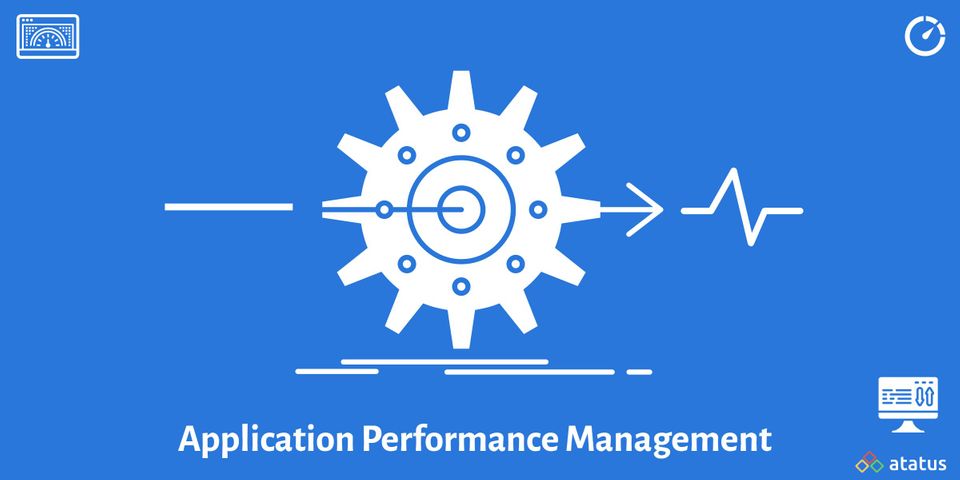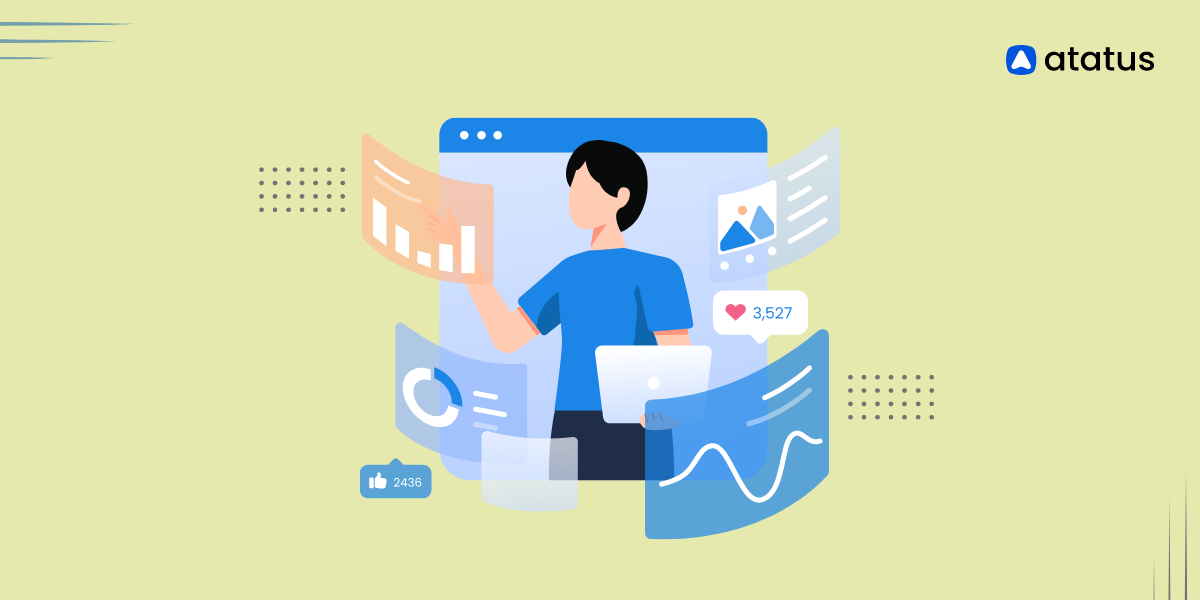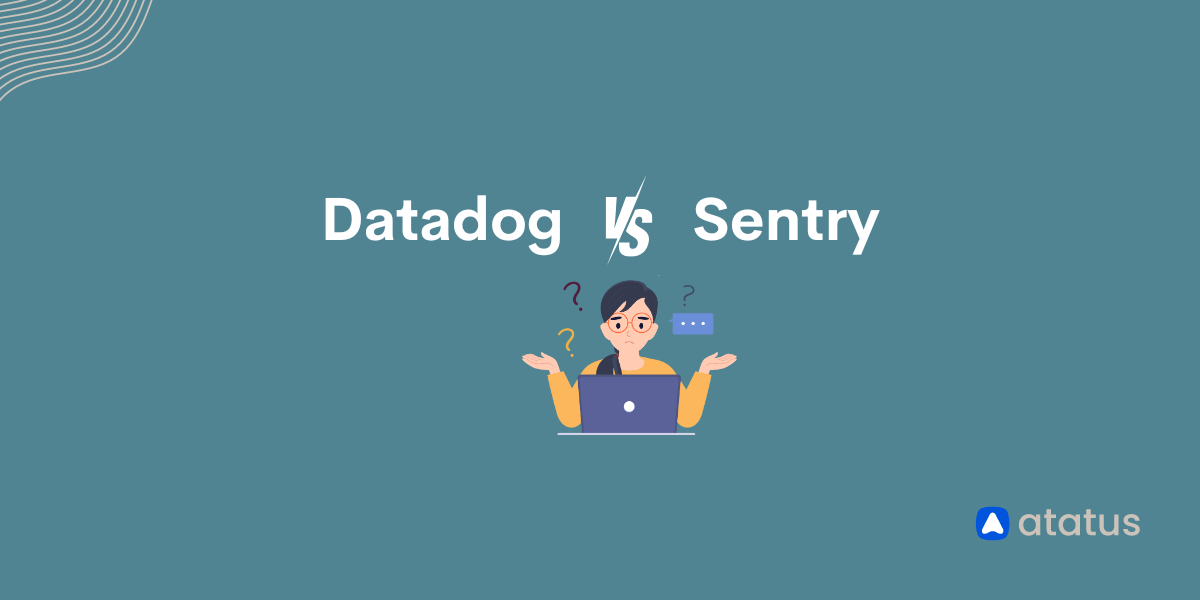Application Performance Management (APM) - 11 Features to Look For When Choosing APM Tool
Application Performance Management is all about gaining a complete picture of your applications' inner workings so you can make sure they're performing as they should. APM tools make it easier for developers to spot issues that are preventing their applications from providing outstanding user experiences.
Furthermore, these monitoring services can help to limit the danger of fatal outages and downtime, which can be extremely costly for any company. Since APM is all about data for developers, a few elements are especially important while looking for the best APM tools.
We will cover the following:
What is APM?
The act of managing the overall performance of software applications to monitor availability, transaction times, and performance concerns that could potentially impair the user experience is known as Application Performance Management, or APM.
Although the terms are sometimes used interchangeably, application performance monitoring is actually a component of many application performance management solutions - after all, you must monitor performance in order to control it.

Instead of relying on traditional application performance monitoring tools, application performance management solutions are increasingly incorporating observability, a performance data collection and analysis technology better suited to the complexity of modern, distributed cloud-native applications.
APM software aids in ensuring that a company's essential applications fulfil set performance, availability, and customer or end-user experience goals. It accomplishes this by monitoring application performance, notifying administrators when performance benchmarks aren't reached, offering visibility into the fundamental causes of performance issues, and automatically fixing numerous performance issues.
How does APM Work?
It helps to look at the process to grasp APM in practical terms. This can be divided down into the following categories:
- Keeping an eye on applications to determine if they're acting normally
- Identifying an issue is the first step
- Notifying IT about the issue
- Data collection and analysis to put application performance in perspective
- Adapting the application environment to prevent similar issues from occurring
APM systems track nearly any type of data that affects application availability, with the purpose of enhancing the application for the business that uses it. Consider it a more intelligent method to observe the overall picture—and to rectify it before your consumers detect any errors.
Consider the case where your application has a flaw. It's not a significant issue, but it's a minor annoyance that could grow into something far worse. Only a few users notice it at first, but if left unchecked, it can quickly become a performance issue. Here's where your APM comes to the rescue. When it detects a problem, it notifies administrators so that they may swiftly resolve the situation before it worsens.
Your APM will considerably minimize your mean time to resolution (MTTR) as a result of this. This is because of the Root Cause Analysis, which helps you to get to the bottom of the problem. You won't have to struggle with manual troubleshooting; instead, you'll get it right the first time.
11 Key Features of APM Tool
APM is all about data for developers, and I mean a lot of data.

They require more than data; they require actionable insights from that data in order to swiftly identify the root cause of application issues.
Here are some of the essential aspects that are supported by the majority of them.
#1 Basic Server Monitoring and Metrics
Server monitoring is a cornerstone capability of every APM provider because servers are one of the few common requirements in application development. As a result, it's difficult to find APM software that doesn't include basic server monitoring and analytics. For this feature, it's especially crucial to pay attention to how a vendor handles server monitoring, taking into account factors like design and usability, and figuring out how that can affect your business.
While the differences in each platform's basic server monitoring offering may appear minimal, the truth is that these distinctions will have a significant impact on how your team interacts with that platform.
#2 Application Log Data
The first thing a developer will say when anything goes wrong in production is "give me the logs." Log data reveals what occurs to an application once it is no longer in the developer's control. Developers' eyes and ears are usually logged data once their applications are deployed.
A centralized logging system, such as a log monitoring package, is required for developers to have access to their logs.
#3 Real User Monitoring (RUM)
While every application necessitates the usage of a server, not every application necessitates the use of users. Real user monitoring (RUM) is a type of passive monitoring that uses both client-side and server-side metrics to follow and evaluate every action a user takes on an application. This implies that in the instance of a web application, RUM tracks and aggregates every page a user views and every button they click, allowing you to see the overall impact of each activity. Depending on the capabilities of the underlying APM software, it can track everything from the speed of the network request to the efficiency of underlying database queries.
RUM is often offered by APM companies that specialize in user-centric application monitoring, which typically takes the shape of mobile and web applications.
#4 Web Performance Monitoring
Web performance monitoring is a feature that is frequently included with RUM. Understanding the performance impact that application changes may have within a user's browser is more important than ever, led to the growing use of JavaScript frameworks in production applications and the tendency for application developers to rely on them to implement browser-based business logic.
Web performance monitoring, while sometimes combined with RUM, focuses on the performance component of metrics available within the browser rather than a full-stack examination of user satisfaction. APM suppliers that offer web-based RUM are more likely to also offer web-based performance monitoring.
#5 Synthetic Monitoring
Synthetic monitoring tracks common application usage, whereas RUM and web performance monitoring track actual application usage. This means that it uses pre-programmed behaviour to detect changes in monitoring data rather than observing the activity of an active user. This can be valuable for spotting possible issues before they affect real users.
#6 Root Cause Analysis
When it comes to software flaws, determining the root cause of an application error can be difficult. A database misconfiguration can result in a browser-based error page, and server overuse can aggravate a database latency problem. When you experience an error, root cause analysis is a feature that can help you speed up the diagnosis process and better understand what happened across the whole application stack.
APM technologies that offer root cause analysis tools frequently function well for larger businesses due to the volume of data that they must keep.
#7 Application Error Reporting
Errors are unavoidable in software development, but detecting and correcting them before they have a significant impact on the end-user can be challenging. Application error monitoring entails simple log aggregation and fatal error analysis at a high level, but logs aren't the only area where problems occur.
Many APM solutions interact directly with popular frameworks and programming languages, allowing them to catch both application-level and server-level issues. This level of error reporting often extends into browser-based errors for APM software that enables web performance monitoring.
The true value of error reporting is frequently found in an APM provider's capacity to not only collect and list errors but also to find patterns within them.
#8 Load Testing and Alerts
Scalability isn't required for every application. Load testing is frequently skipped by internal tools and niche products. Large-scale consumer applications, on the other hand, have a high level of availability, which necessitates load testing and resource utilization monitoring.
While load testing is vital in these types of systems, the main value of the APM platform comes from the data it collects. Identifying patterns across application infrastructure at various load levels can help with scalability and long-term planning.
#9 Artificial Intelligence
The goal of incorporating AI into a normal APM platform is for the machine to learn and automate the manual diagnosis stages for root cause analysis and performance alerting, allowing for more time to optimize and less time to debug.
While AI may not be suitable for larger companies with established systems for dealing with errors and performance concerns, it might be the difference between surviving and thriving for small companies with fewer resources.
#10 Integration Capabilities
Admins no longer design applications in a vacuum, due to the cloud. Integrating with third-party services is more of a norm than an exception, which is why many APM platforms allow for various third-party cloud integrations.
Integration has the advantage of allowing you to expand your data set without having to make major infrastructure changes to accommodate an APM instrument.
#11 Custom Metric Support
Finally, each application is distinct. That means the developers must occasionally keep track of things those other organizations or customers do not need to be aware of. While conventional server and application metrics are quite useful, you can receive even more value from an APM tool if you can generate your own unique metrics.
You may use your APM custom metrics to determine how many log messages are sent per minute or how long it takes to process a critical action in a queue. This type of custom metric should be simple to develop and track with your APM.
Finally!!!
Since software applications are increasingly prevalent in everyday life, speed and stability are more crucial than ever. APM solutions are a great way to keep ahead of the curve on these challenges, but choosing the proper vendor for your company is critical to getting the most out of the software.
Monitor Your Entire Application with Atatus
Atatus provides a application monitoring tools to monitor and improve the performance of your frontend, backends, logs and infrastructure applications in real-time. Our platform can capture millions of performance data points from your applications, allowing you to quickly resolve issues and ensure digital customer experiences.

Atatus Application Performance Monitoring (APM) can be beneficial to your business, which provides a comprehensive view of your application, including how it works, where performance bottlenecks exist, which users are most impacted, and which errors break your code for your frontend, backend, and infrastructure.
#1 Solution for Logs, Traces & Metrics
APM
Kubernetes
Logs
Synthetics
RUM
Serverless
Security
More





